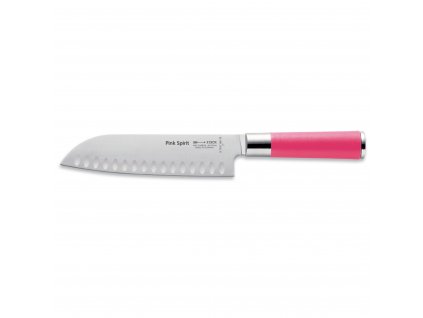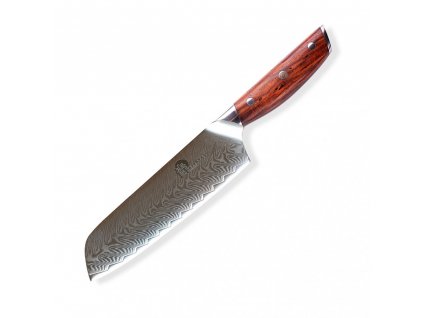Santoku knives
Santoku knives - one of the most universal knives in your kitchen
What is a Santoku knife?
Santoku knife is a very versatile, medium-sized knife that can be used for numerous culinary tasks. The knife originated in Japan and has a wide blade with no tip but a dull back spine that curves down to meet the straight-edged front blade. It is 12 to 20 cm long, has no bolster, has a balanced weight and is light to hold.
What is the difference between a Santoku knife and a chef’s knife?
Home cooks and professional chefs use both santoku and Chef's knives for a variety of cutting tasks. What are the differences between these two types of knives? Santoku knives have shorter blade than chef's knives, and their blade is usually single bevel as opposed to double-bevel Chef’s knives. As it doesn’t have a tip it allows for slicing in a single downward cut while with a Chef’s Knife you need to rock the blade forward. Choose a Chef's knife if you prefer the ‘rocking’ cutting method and go for Santoku to cut faster and more efficiently.
What is the Santoku knife used for?
‘Santoku’ can be translated as ‘three virtues’ or ‘three uses’ which are chopping, dicing, and mincing. It allows you to cut very thin slices of food, which makes your dishes look nice and aesthetic. You can use a Santoku knife for:
- cutting meat
- slicing ham or cheese
- slicing, chopping or dicing fruits, vegetables and nuts
- mincing herbs
- creating fine slices
In Kulina you will find quality Santoku knives manufactured by reliable brands that stand up to wear and tear. Check the knives by Dellinger or Forged or Zwilling or read our ultimate guide on buying a knife first. You can also check our best-sellling Santoku knives here.
How to sharpen a Santoku knife?
If you use your Santoku knife on a daily basis, you should sharpen it quite often - at least every two weeks. The best method to sharpen your Santoku knife is with a whetstone. Sharpen your knife like a regular knife – with a 20-degree angle to the sharpening stone, and if it has a granton edge, go for 15 degrees. You can also take your knife to a specialist.
How to take care of your Santoku knife?
Santoku knives are quite an investment so if you want your Santoku knife to last for ages, make sure you follow these simple rules for cleaning and storing your knives:
- knives are often dishwasher-safe but we recommend you clean your knife by hand as dishwasher detergents can damage the surface of a steel blade
- if a knife has a wooden handle, do not put it in the dishwasher
- to prevent wooden handles from becoming dry, regularly oil them with linseed oil or beeswax
- store your knife separately so that the blades do not get dull. Use a knife block or a knife case
- sharpen your knife regularly






